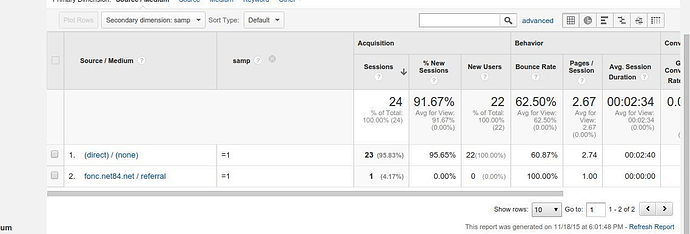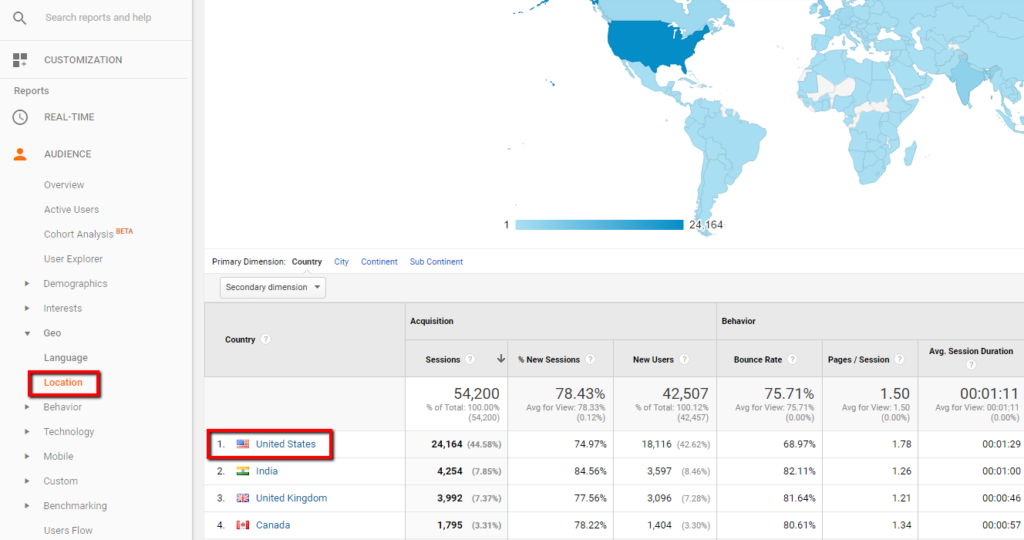Deciphering the Significance of Secondary Dimension in Google Analytics: Everything About Its Significance and Influence
In the realm of electronic analytics, the application of secondary dimensions within Google Analytics serves as an essential device for discerning much deeper layers of information insights. The relevance of additional dimensions lies in their capability to give a nuanced sight of customer behavior and communication with a web site or system.
Recognizing Additional Measurements in Google Analytics
The understanding of secondary measurements in Google Analytics is essential for acquiring deeper understandings into customer behavior and web site performance. While primary dimensions offer fundamental information factors such as traffic resources and web page views, additional dimensions permit a more nuanced analysis by giving additional context to these key metrics. By integrating second measurements, individuals can section and filter their data to reveal patterns and trends that may not be immediately obvious.

Introducing the Perks of Additional Dimensions
Structure upon the fundamental understanding of secondary dimensions in Google Analytics, checking out the advantages they use exposes very useful insights for boosting data analysis and decision-making. By integrating additional measurements, customers can dive much deeper into their information, acquiring an extra comprehensive sight of customer behavior, content performance, and various other crucial metrics.
Furthermore, second dimensions give context to key information, providing extra layers of details that can aid in recognizing customer communications and preferences. This improved understanding can lead tactical decision-making, causing more targeted advertising and marketing campaigns, site optimizations, and general improved performance. Essentially, secondary dimensions work as an effective tool for opening much deeper understandings and making best use of the utility of Google Analytics for organizations and internet site owners.
Leveraging Second Measurements for Enhanced Insights
By utilizing the power of second dimensions in Google Analytics, services can reveal much deeper insights that drive educated decision-making and calculated optimization initiatives. Leveraging secondary measurements allows companies to dive beyond surface-level data and obtain an extra extensive understanding of customer habits, target market demographics, website traffic sources, and site efficiency. By combining key dimensions like traffic sources with second dimensions such as geographic place or device group, companies can determine which gadgets or regions are driving the most useful website traffic to their website.
In addition, additional measurements allow services to segment and assess data extra properly, helping them determine fads, patterns, and possibilities that may have or else gone undetected. By using secondary dimensions, services can tailor their marketing techniques, web content, and customer experience to Check This Out better satisfy the requirements and preferences of their target audience. Basically, leveraging additional measurements in Google Analytics empowers organizations to make data-driven choices that lead to enhanced performance, raised ROI, and lasting development.

Effect of Second Dimensions on Information Analysis
Enhancing data evaluation through the utilization of additional dimensions in Google Analytics provides companies with a much deeper understanding of their online performance metrics. By integrating secondary dimensions, such as time of day, geographic location, or tool group, companies can reveal valuable insights that might have been overlooked with key measurements alone. This enhanced level of granularity enables more precise segmentation of data, allowing services to determine patterns, fads, and connections that can drive critical decision-making.

Maximizing Potential: Secondary Dimensions Strategies
The calculated use of secondary measurements in Google Analytics extends past enhancing data evaluation; it includes crafting targeted strategies to unlock the full potential of beneficial understandings for service growth. By using secondary measurements successfully, organizations can dive deeper into news their web site web traffic, customer behavior, and advertising and marketing campaigns to draw out actionable understandings. One key strategy is to combine secondary dimensions with key measurements to get an extensive sight of individual communications. Pairing the primary dimension of 'source/medium' with secondary dimensions like 'landing web page' or 'gadget category' can expose which channels are driving web traffic to details web pages or how user behavior varies throughout devices.
In addition, making use of additional dimensions to sector information based upon customer demographics, behavior, or innovation can assist organizations customize their advertising initiatives to certain target market sectors. This targeted strategy can result in enhanced conversion rates, boosted customer experiences, and ultimately, raised ROI. By optimizing the potential of second measurements in Google Analytics, businesses can make informed decisions, optimize their online existence, and drive lasting development.
Verdict
In verdict, secondary measurements in Google Analytics play an essential duty in providing deeper understandings and boosting data analysis. Including secondary dimensions into information analysis approaches can lead to more educated decision-making and enhanced total efficiency.
While main dimensions give essential data factors such as web traffic resources and web page sights, secondary measurements enable for a much more nuanced analysis by providing added context to these key metrics. By combining main measurements like website traffic sources with additional dimensions such as geographical location or device category, businesses can recognize which devices or areas are driving the most important web traffic to their web site.
By incorporating secondary dimensions, such as time of day, geographical area, or gadget group, organizations can reveal valuable understandings that may have been neglected with main measurements great post to read alone. One vital strategy is to integrate second measurements with main measurements to get a comprehensive sight of individual communications. Combining the key dimension of 'source/medium' with additional measurements like 'touchdown web page' or 'device group' can expose which channels are driving web traffic to details web pages or just how customer actions varies across tools.